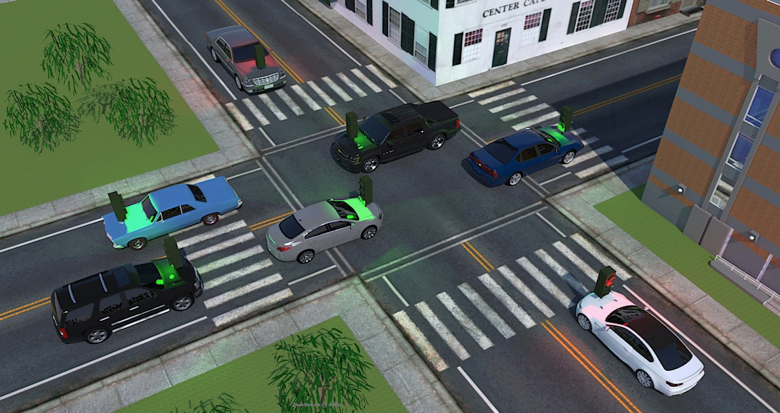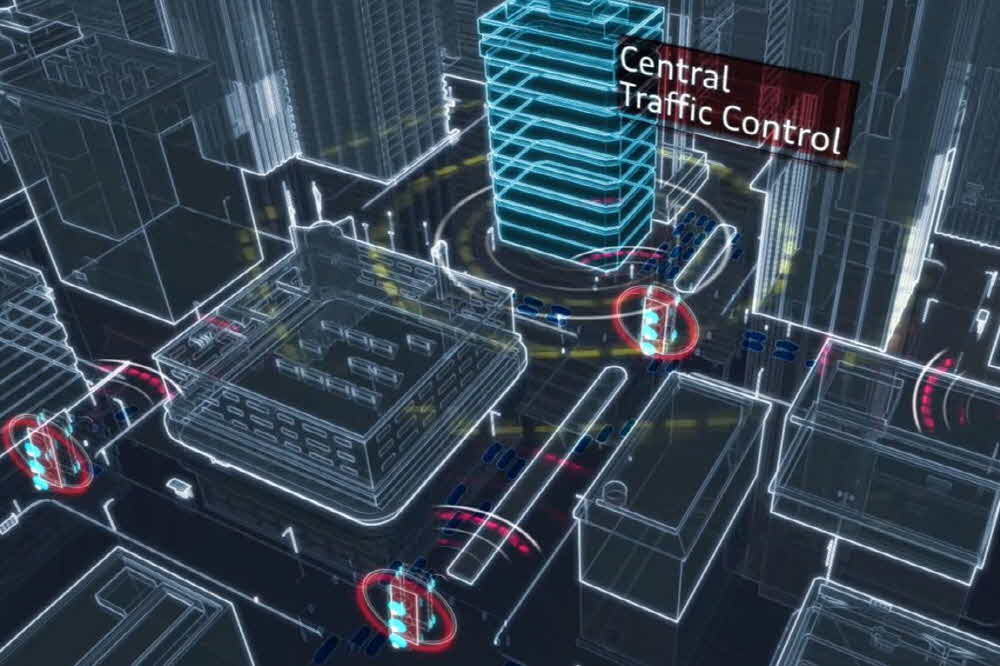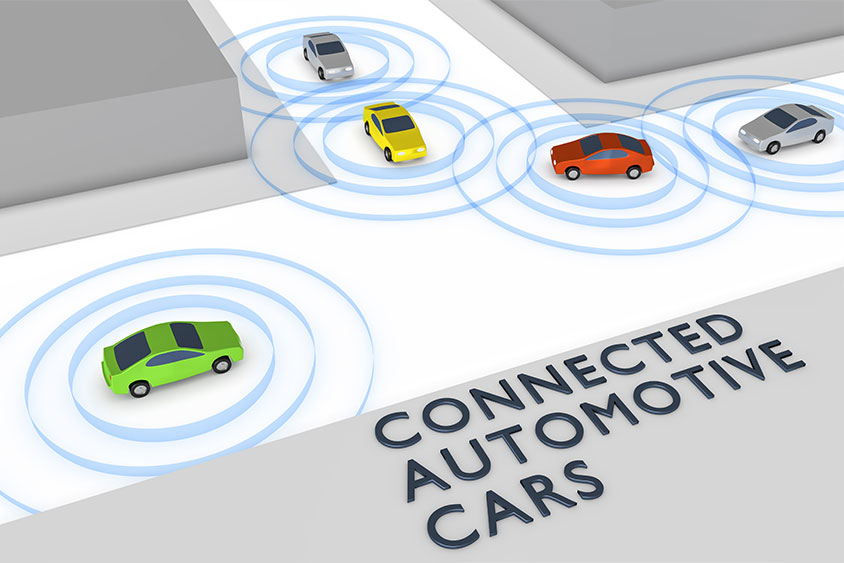
Traffic congestion is always a headache in Moscow, Beijing, Cairo and Seoul. It can take more than two hours to go to work in the suburbs, or more than three or four hours to commute to work. If you can reduce your time from three hours a day to two hours a day, you can save up to 22 hours a month for a five-day workweek and three years for 35 years.
In order to solve this commuting problem, a considerable number of start-ups are carrying out research and development aiming at improving the traffic system. Related technology is also under development, one of which is Vehicle-to-Vehicle (V2V).
V2V enables communication between vehicles to communicate wirelessly and expect traffic system efficiency without traffic signals such as traffic lights. And to develop an algorithm that enables the vehicle to run smoothly and safely through the communication function mounted on the vehicle.
Professor Ozan K. Tonguz, a professor at Carnegie Mellon University, is conducting a VTL (Virtual Traffic Lights) study and is experimenting with actual vehicles on the roads near the university since 2017. In July 2018, we also held an official VTL demonstration in Saudi Arabia. The researchers say that through the development of V2V technology, the era of controlling traffic with signals will end, and the era of waiting for traffic lights to pass through the intersection will be over.
The signal has never evolved for a long time since the introduction of the early 20th century. Basically, the timer is used to control the green light and the red light. Even if there is no crossing, you must stop when the red signal comes in. Although it is possible to subtly change the signal interval according to the morning and evening commute peak hours, it is only a matter of adjusting the signal change time.
Traffic lights using V2V do not require traffic lights. The system communicates with several cars that approach some intersection in the same direction and defines one of them as the leader. When the leader vehicle approaches the intersection, the group with the leader approaching the intersection decides whether to pass through the intersection as a green signal or stop at a red light.

If there is another vehicle queue coming across the intersection, the V2V communicates and the leader sends a green signal to the other group vehicle. Then the entire group passes through the intersection. On the other hand, if there is a pre-entry group that is expected to encounter another group at an intersection, the leader will send a red signal to his group to stop all vehicles before entering the intersection.
In this algorithm, Liner does not always take on the same vehicle, but it keeps changing as the timing and situation change. It is not the traffic lights that determine whether or not an intersection passes through this system, but the access time with other group vehicles. Therefore, you do not have to wait for the red light at the intersection where there is no other vehicle like the existing one. If you do not have to stop, you can always keep driving.
The VTL algorithm selects the leader vehicle from various parameters such as the distance from the forward vehicle, the distance from the center of the intersection, the vehicle speed and the number of surrounding vehicles. It also detects that the distance of the vehicles crossing the intersection is far from the intersection, or that one is slightly slowed down, allowing the vehicle to continue running without stopping at the intersection. If the vehicle to turn right is the closest to the intersection, the right turn will be applied first, and there is no need to wait for the timing of turning right at the center of the intersection.
Here, using a VTL system when communicating with each other uses a wireless communication method called DSRC. DSRC was developed considering various purposes such as electronic bill collection and driving control, but unfortunately there are not many vehicles equipped with DSRC.
However, VTL systems using next generation communication standards such as DSRC and 5G transmit information during driving every tenth of a second. The data of the latitude and longitude of the vehicle is transmitted as data, and the processor mounted on the vehicle accumulates the location data including the surrounding vehicles in a digital map service such as Google Map and calculates the distance to another vehicle or intersection. This allows the leader group to decide whether it is a green light or a red light and informs the driver.

VTL is not a centralized type, but a distributed system in which individual vehicles communicate with each other to send and receive information. Insects and fish say they seem to change their direction by receiving information from side-to-side movement to change their direction. The introduction of a new traffic system based on V2V may bring about a big change in the traffic system that has not changed for the first century since the first half of the 20th century.
The researchers estimated the effect of the VRL system using virtual city migration simulation software for two cities in the US, Pittsburgh and Portugal. As a result, the two cities have been able to shorten the rush hour in Porto from 35 minutes to 21 minutes and 20 seconds in Pittsburgh, and from 30 minutes to 40 seconds in Pittsburgh to 18 minutes and 20 seconds. An average of 30% would have reduced work hours. Of course, depending on the person, up to 60% can be expected to save time on the job.
The reason why the VTL system greatly reduced the turnaround time is that there is no need to stop pointlessly in the red light, and it is no longer necessary to stop at the intersection with the traffic lights as well as the VTL system at all the intersections, It also revealed that 70% of the cases were solved by solving problems at intersections where most accidents occurred. It is expected that carbon dioxide emissions will be reduced.
The researchers hope that DSRC will soon become widely available, but it is difficult to introduce a VTL system quickly because of the small number of DSRC-equipped vehicles. Of course, it does not mean that the VTL system really helps. If DSRC is not installed in the entire vehicle, it is not possible to take advantage of the VTL system. However, by integrating the VTL system into the existing intersection, it can communicate with some DSRC vehicles and partially convert the signal using the VTL system. Using this model, it is estimated that the simulation results will achieve 23% greater efficiency than current control systems.
The problem of realizing VTL system is the balance of pedestrian and bicycle. As the public can not afford to carry the DSRC communication equipment at all times, the pedestrian can try to come up with a short-term solution that stops the vehicle in all directions when the button is pressed. In the future, however, it may be necessary to develop a system that automatically senses a pedestrian with a camera mounted on the vehicle and yields the road automatically.
Combined with a recently developed autonomous vehicle, the VTL system can operate quite well. Autonomous vehicles have weaknesses in complex situations where they enter crowded intersections, but if you introduce a VTL system, you can eliminate crowded intersections. Autonomous navigation systems and VTL systems can be considered to be quite friendly.
For example, a VTL system that works with digital map and surrounding vehicle location information can support autonomous navigation systems in difficult-to-watch conditions. It is also possible to prevent a mistake by letting the autonomous drive system, which is not a human driver, inform the decision of the VTL system so that the autonomous drive is performed accordingly. In this respect, the VTL system can be a big turning point in transportation and traffic problems.


















Add comment